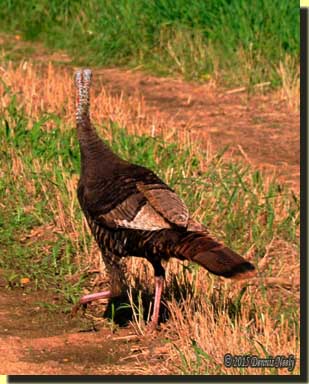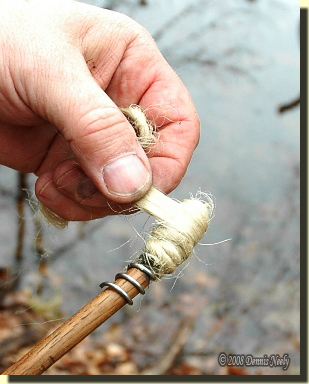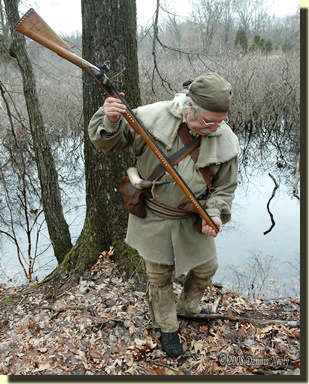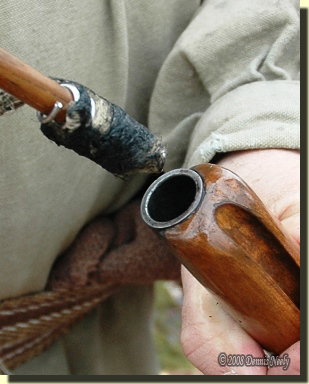Skin stung; eyes watered. The cedar bough bobbed in arrogance, celebrating its humble victory. Trail-worn elk moccasins staggered, then slowed. Thick clouds, coupled with night’s unforgiving abyss, shrouded the moon and stars. The glade demanded a heavy toll on that pre-dawn April morn in the Year of our Lord, 1794.
Despite the flogging, the hired hunter persisted through the cedar grove, into the small clearing, then up through the deep gully. The air smelled of rotting deer pellets and the certainty of impending rain. A lone red cedar tree grew at the junction of the ravine and the open prairie. Other cedar trees, yellowed and barkless, losers in the quest for wilderness survival, littered the area between this tree and the nearest wild cherry.
The woodsman’s trade blanket, rolled tight and bound with a leather portage collar, bounced under the cedar. Dead branches tugged at the tattered outer shirt. Days before, swift blows of a forged belt ax cleaved a hiding place within the tangle in anticipation of a future visit. Perhaps this might be the morning a wild gobbler, dubbed “Black Bart” ventured within the jurisdiction of the death bees.
The backcountry hunter, hired by Samuel the Trader to provide meat for his meager trading post, was on his own that day. The quest for the bird was more than a search for a next meal. In early April, the hunter scribbled “Black Bart” in his journal when he first glimpsed the long-bearded tom.
The naming came more by accident than conscious thought, much like “Old Lady Gray,” the gravel-voiced hen that disrupted so many simple pursuits, or “Spins like a top,” an eager short-bearded jake with a strutting style that made one dizzy. This wild turkey was different. The normal red on his head was black, unmistakable from a distance.
“Gob-obl-obl-obl! Obl-obl-obl-obl!”
“Ark, ark…ark, ark, ark, ark.”
“Gob-obl-obl-obl!”
“Ark, ark…” Two seductive clucks, sucked through a single wing bone, added a new maiden to the roost discussions. But that was all the mysterious hen offered. Like a thick fog, an enticing silence hung over the grassy clearing’s west border, or so the woodsman hoped.
Minutes lumbered on, then big wings thrashed. Muffled thumps, heard but unseen, stoked anticipation’s glowing embers. A crimson cardinal twittered, “Tu-Tu-Tu-Tu…” A mourning dove droned on from a young maple, “Aww, coo, coo, coo…aww, coo, coo, coo…” A downy woodpecker rat-a-tat-tat-tatted, but a muffled “Utt…utt,” off near the dying wild apple tree preceded two hens sneaking into the sprouting grass.

A red-headed turkey skirted the meadow’s north edge. Two more heads appeared. One of the toms stopped and fanned. “Gob-obl-obl-obl-obl-obl!” Arteries throbbed, but the woodsman’s thumb did not fidget over the cock’s jaw screw. Instead, disappointment reigned.
Throughout the next hour, gobblers and hens cavorted near the meadow’s knob. Not a one sported a black head. A hen walked within fourteen paces, then descended the gully’s south finger. “Black Bart never put in an appearance,” the brass lead holder scribbled on a folded page. “Perhaps tomorrow, or Saturday ‘Old Turkey Feathers’ will thunder, perhaps…”
An 18th-century cleaning…
Unbelievable exhilaration comes with a risk. Chain gobbles, fanned tails dancing at sunrise and song bird melodies heighten the traditional hunt. More times that I would like to admit, one particular bird or animal becomes the focus of my 1790 quests. Dear reader, you can read that as “obsession,” if you like. I’ve worked entire seasons for a moment of truth that lasts but a few seconds. A traditional woodsman must overcome the fear of making a minor mistake at a crucial point in the stalk—and if it happens, accept the consequences.
I discovered Rudyard Kipling my senior year in high school. Kipling’s poem “If,” written in an Old English font on a lacquered plaque, hangs to the right of my desk. I used to know the poem by heart, but… One haunting line, “If you can make one heap of all your winnings and risk it on one turn of pitch-and-toss,” pretty well sums up the philosophy behind my motivation when it comes to chasing one specific critter.
A many years ago, smoke drifted from a central fire pit at a backwoods traditional hunting camp. White canvas abodes reflected orange and yellow light from crackling oak splits. Tales of the day’s hunt ebbed, and slice-by-slice, so did the size of a juicy venison haunch. One-by-one, weary woodsmen set about cleaning their fouled firelocks.
In the blink of an eye, the charm of that 18th-century vignette vanished. Living historians retrieved modern fishing tackle boxes or emerged from their shelters with plastic squeeze bottles teeming with secret gun cleaning solutions. Stainless steel range rods rattled, reclosable sandwich bags regurgitated precut patches. And yes, the hired hunter was guilty, too.
As I gazed about, I realized risking one turn at pitch-and-toss was in order. With the frustrated sigh that accompanies most of my “not-quite period-correct revelations,” I vowed to learn to clean “Old Turkey Feathers” in an 18th-century manner—at least when immersed in a time-traveling adventure. The big question was, “How?”
I consulted one of my trade good inventories, being that of David McCrea, sent out from Michilimackinac in 1777. Bale #3 included “1/2 Gro Gun Worms” (Armour, 200). A gun worm is a small, tapered coil of steel that resembles an open spring. The large end screwed over the end of a trade gun’s wooden rammer. In the same source, the John Askin inventory from December 31, 1776 listed “15 Dozen of Worms” (220).
Francois Victor Malhiot listed goods “confided to the care and charge of J. Bt. Bazinet and J. Q. Racicot” on October 4, 1804, which included “3 Dozen Wormers” valued at three prime beaver pelts (Malhiot, 221). Most of the trading entries appear for a dozen, and gun worms were sometimes included in lesser quantities with gifts to Native Americans.
S. James Gooding addresses gun worms in his book, Trade Guns of the Hudson’s Bay Company: 1670 – 1970:
“Gunworms appear from that first gun-related minute in 1674 when 300 guns, 300 worms, and 300 bands for guns were ordered. They are frequently mentioned over the next two or more centuries but it is not surprising that they are not discussed in detail. They are such an insignificant item” (Gooding, 118).
Meshach Browning gave a hint as to ancient methods and a possible cleaning medium: “…I took the tow I used for cleaning my gun…” (Browning, 115).

Tow, flax fiber or any other gun cleaning product are not listed in either the McCrea or Askin inventory. Tow is unspun flax fiber, common in the 18th century. Being a natural fiber, it can be used, washed, dried and reused.
Browning’s use is consistent with his life style, but not necessarily so for the returned captives. With that in mind, the hired hunter for the local trading post carries two small wads of tow along with two or three gun worms in his shot pouch.
Each returned captive persona carries one or more gun worms in his pouch. The worms pull natural wadding with ease, but it is difficult to dislodge a round ball held in place by leaf or grass wadding. I have yet to figure out how John Tanner accomplished this feat: “As I was one day going to look at my traps, I found some ducks in a pond, and taking the ball out of my gun, I put in some shot, and began to creep up to them… (Tanner, 60). The only explanation/experiment that works is a load where the ball is seated on the black powder with a forest-wad over top.
Instead of carrying tow for cleaning, these forest tenants use wide-bladed grass, stripped from the main stem. Grass leaves with a center rib do not work well. Dried fall grass that feels damp and flexible to the touch is suitable, too. Forming a bore-diameter ball with the leaves wound around the worm serves the same purpose as the tow, except once dirty the wiping wad is discarded rather than rinsed out, as in the case of tow.

The first step is safety; check the bore with the wiping stick to make sure the entire charge is clear and the smoothbore is unloaded. A small whittled twig plugs the touch hole. The barrel is then filled half-full with water, and I have to note, I have used some nasty stump water with the same satisfactory results as tap water.
With a thumb covering the muzzle, the water is sloshed about the bore by tipping the Northwest gun back and forth. The fouling suspends, the water is dumped out on the forest floor and the washing process repeated until the water runs clear. The trade gun is then propped against a tree and allowed to drain for a few minutes.
A second hank of tow or tree leaves works well for wiping the frizzen’s underside and the pan; again, scrub until clean. With the worm secured to the ramrod, wrap the cleaning medium around the worm’s spirals forming an elongated swab that fits snug in the bore. As an aside, the second worm in the shot pouch is a precaution for a dislodged cleaning worm. That has happened only once in almost two decades, but consider that experience a wilderness warning.

The swabbing continues until the tow, which often requires rinsing out, or leaf ball comes out clean. And don’t pooh-pooh the leaf cleaning until you’ve tried it. The multiple wraps needed to form the elongated ball also form ribs that come out loaded with fouling.
A coating of oil or tallow can be applied to prevent rusting, but in an 18th-century context, the arm was reloaded after cleaning, either as a precaution for protection or to continue the hunt. This was the way of the forest, the best path to survival in the Old Northwest Territory.
When the hunt is ended, but before the trade gun returns to a locked safe, it is best to do a quick modern cleaning and complete oiling of the firelock. Our favorite muzzleloaders are expensive and require proper care to ensure years of service. Always remember, a rusty bore, or worse a burst barrel, was period-correct for the 1790s, too. Better safe than sorry.
Give traditional black powder hunting a try, be safe and may God bless you.



3 Responses to A Gobbler Dubbed “Black Bart”